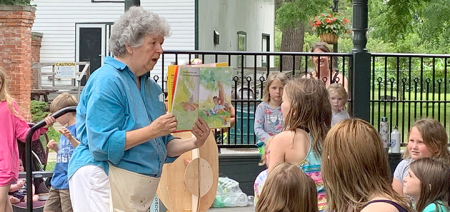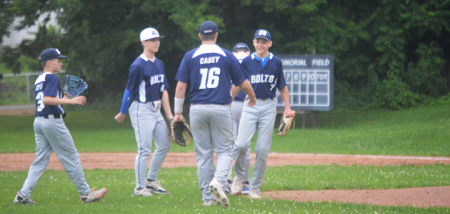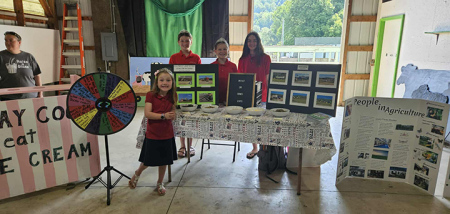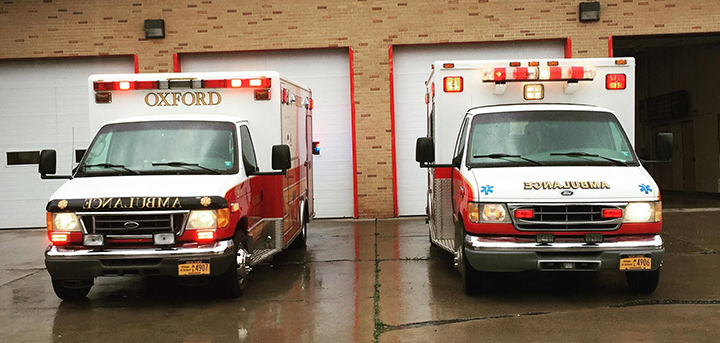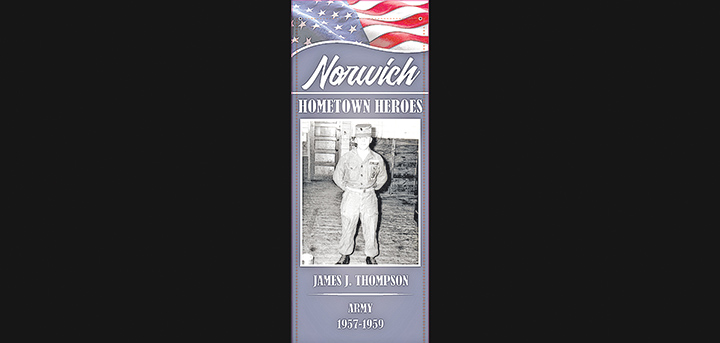Chenango In The Civil War: Baseball And Pecan Pie
Published:
May 23rd, 2012

Editor’s Note: In conjunction with the Chenango County Civil War Commemoration Project Team, The Evening Sun will present a monthly series chronicling items of local interest during the war between the states, compiled and written by a number of local history enthusiasts.
By Fred Lanfear
Correspondent
The painting shown here is certainly a pleasant scene, isn’t it? We see an old-fashioned game of baseball being played in mild weather near a small village while spectators line the first-base line and the outfield and a small group converses in the foreground. It might be in a village park or maybe on a neat college campus.
The painter was Otto Boetticher, a New York City artist of note in his time. A large print this work is on display in Oxford’s depot-museum, on long-term loan by its owner, Bill Searfoss. It depicts, possibly, an event on July 4, 1862. However, it is not a village park or a college campus. The setting is the Salisbury Prison in Salisbury, North Carolina in 1862 and the ballplayers are Union prisoners of war. (Boetticher was a prisoner there during the spring and summer that year. He was exchanged for a Confederate Major.)
The irony is striking, that our most terrible war and our most popular sport were intertwined. Baseball was played by prisoners in many of the South’s 13 prisons and North’s 12. In fact, the story would take hold that southern boys learned the game from their northern prisoners or captors and took it home after the war. That idea persists among many fans but deserves shelving with other myths of the game. Actually, the game had spread south well before the war, mainly the “townball” version of two innings with nine outs each, driven stakes for bases and the “plugging” of base runners for an out. The “New York Game” of nine innings, three outs, a diamond-shaped infield and 90-foot base paths had spread to Cincinnati, St. Louis, San Francisco and Sacramento by the late 1850s with teams and local leagues formed in each city.
Union boys who were held in Tuscaloosa, Alabama and in New Orleans learned from their captors and when later transferred to Salisbury they were the outstanding teams. It was already a national game with some regional variations, not a Yankee gift to the Rebs.
The early years of the war—through 1863—were good days for camp baseball. Regular prisoner exchanges kept prison populations low. Salisbury, for example, built around an old cotton factory, was designed for 3,000 prisoners but typically held only about 1,200 during 1862 and 1863. Union soldiers, according to George P. Kirsch, author of “Baseball in Blue and Gray,” often came in with a bat and ball in their knapsack ready to play. In later years, this would change drastically, miserably. Several Oxford boys would pay the price.
Who would have thought that the war could get any worse than Shiloh, Antietam, Gettysburg and Chickamauga? But worse it got, much worse. The bloody, gruesome battles of The Wilderness, Spotsylvania, Cold Harbor, The Seige of Petersburg and Sherman’s march through Georgia and South Carolina brought casualties so great that both sides refrained from publishing casualty lists. Huge numbers of prisoners were taken.
Neither North nor South was prepared for this influx of extra prisoners. Exchange programs had been stopped, making things worse. The prisons filled, overflowed. High prison deaths were common. Over 25% of Elmira’s prisoners died in captivity and it became known as “Hellmira.” The infamous Andersonville Prison in Georgia held 33,000 men in an 11 acre field. Salisbury grew to nearly 10,000. War for many had truly become hell.
Food, health care, sanitary conditions, everything in the camps was miserable, almost unspeakable. Neither side could cope. There was no baseball anymore. In this late phase of the war, three Oxford boys were captured. None would live to see home.
James Beardsley was first. He and Theodore Ingersoll, a friend from Oxford, were in Co. K of the 10th NY Volunteer Cavalry. Beardsley was captured in Unionville, Virginia on July 15th, 1863. He died in Libby Prison in Richmond on October 2nd that year. He had survived Gettysburg but not the prison life. Ingersoll returned home to a successful business career in Vernon, NY. His weapons, some uniform parts and several photographs and family documents are on display in Oxford’s museum.
James Eaton and William Martindale were members of Company H, 5th NY Heavy Artillery when they were captured at the Battle of Cedar Creek near Winchester, Virginia on October 9th, 1864 and taken to Salisbury Prison where conditions had become horrible. They were close friends and comrades so when Eaton could have escaped in December he instead came back to support Martindale. He died on January 3rd, 1865. Martindale lasted until January 14th. A sad story of two heroes. Eleven weeks later, Appomattox. The dreadful war was over. Next came the struggle to “bind up the nation’s wounds.” It would take decades.
What of baseball? We know the story. It flourished in North and South. Every town had a team. It was called our national pastime. Two major leagues were formed and have competed in a post season “world Series” most years since 1903. It’s an international sport now. Many of our best players come from Canada or the Caribbean or South America or Japan, even Australia. The Little League World Series in Williamsport, PA is the most popular TV sports attraction year after year.
There was a cost, an awful cost. But 150 years after this painting was put on canvas we can safely say that our nation is united and the game goes on.
Comments
